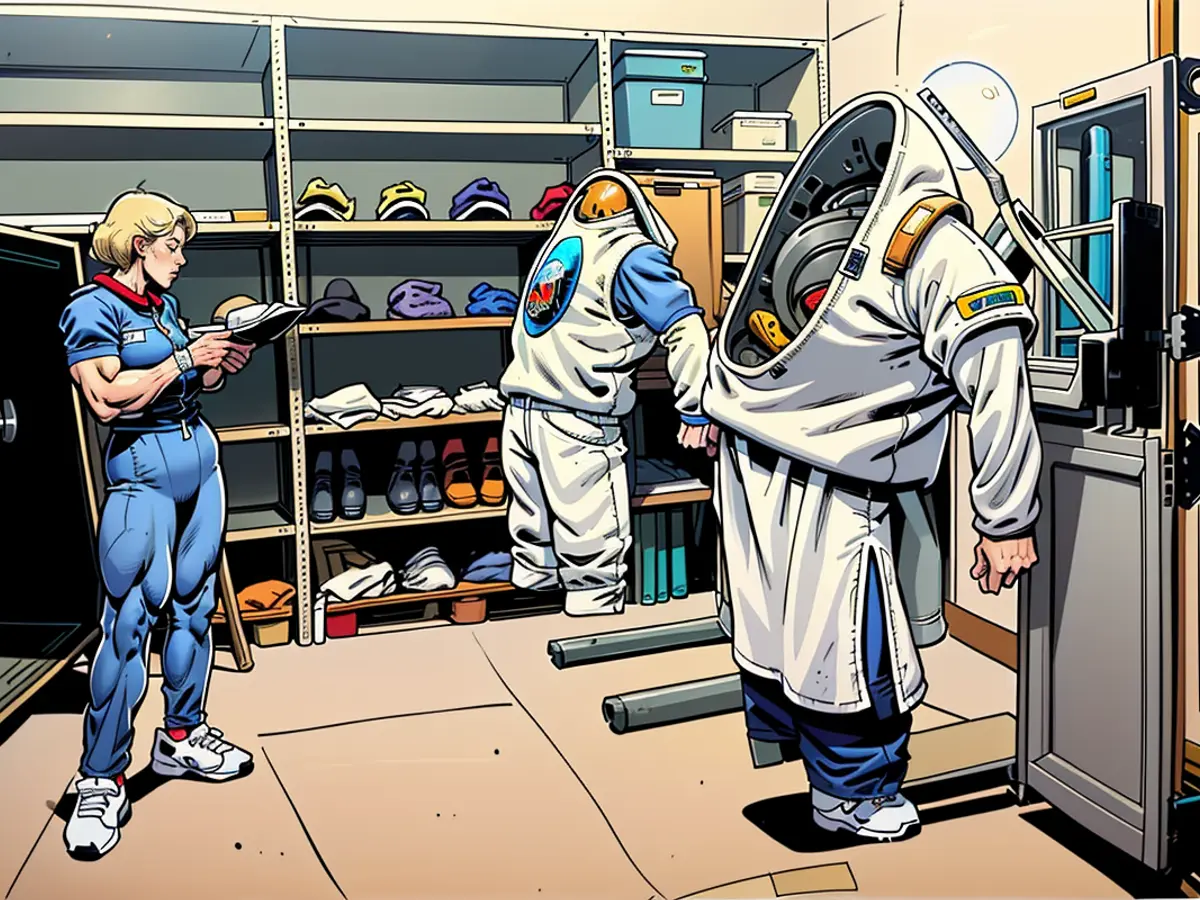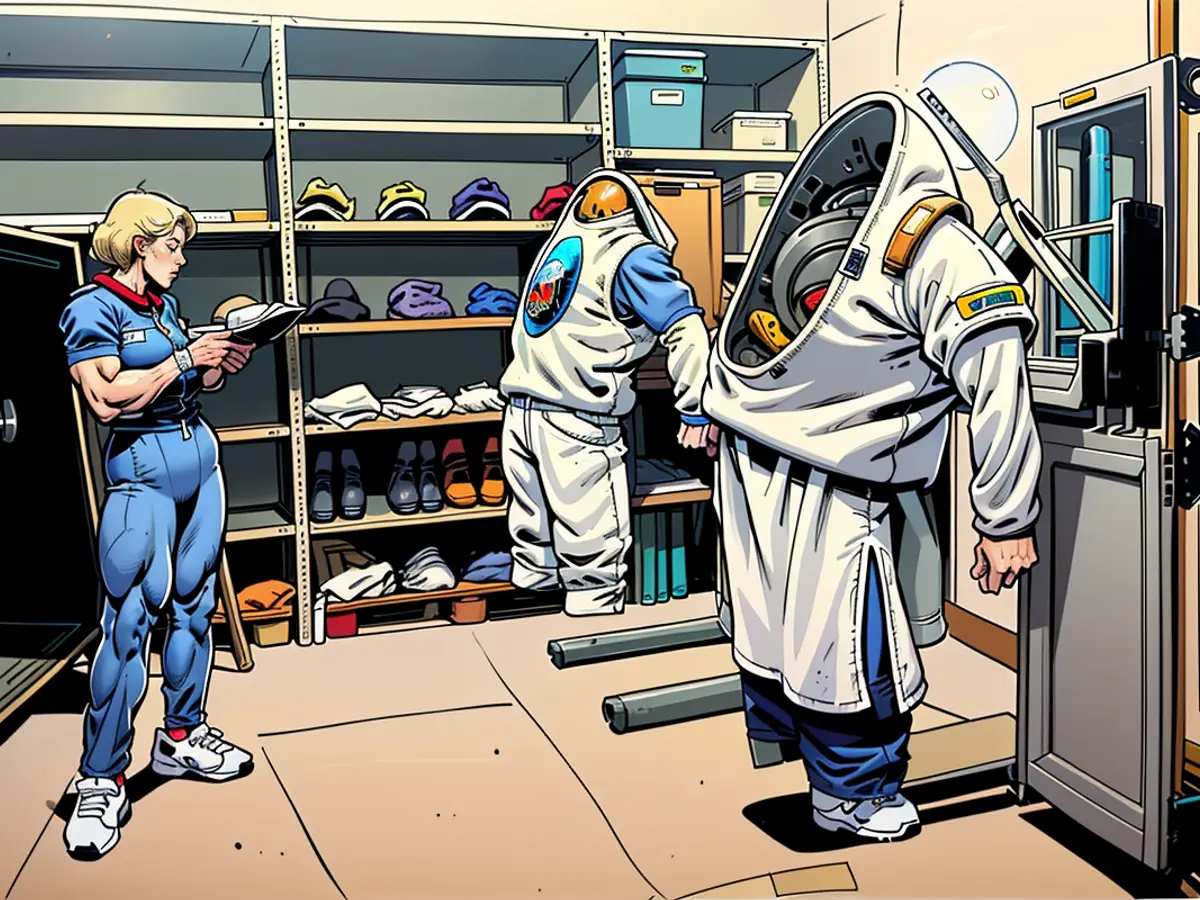Cologne serves as the closest earthly equivalent to experiencing the moon.
"Luna Base Training Hub": The city of Cologne now houses a moon mission preparation facility, completer with moon dust, rocks, and lunar rovers. As per the European Space Agency (ESA), this is the only such facility globally.
Rugged rocks in a gray desert of dust, accompanied by a miniature spacecraft, a "lunar rover" on wheels, and the all-encompassing blackness of space - this is what the new "Luna" astronaut training center in Cologne looks like. To ESA, it serves as a "unique global facility to prepare future missions to our Earth's moon." In simpler terms, "the Moon on Earth." Covering 700 square meters, it cost approximately 45 million euros, funded jointly by ESA, the German Aerospace Center (DLR), and the state of North Rhine-Westphalia.
The Moon, last ventured by humans in 1972, has regained considerable attention recently. In fact, talks of constructing a "Moon Village," a lunar base for research, are underway. Astronaut Alexander Gerst explains, "We believe the Moon was born from the Earth, it's the Earth's twin. But it has no atmosphere, so everything on its surface remains preserved." He further adds, "On Earth, we can't find rocks billions of years old, untouched. On the Moon, we can."
Understanding the Moon better could provide insights into the Earth's past and potentially future. Gerst hypothesizes, "We might find rock fragments on the Moon that were blasted off from the early Earth. On those fragments, early Earth life may be preserved. We need to collect them and complete the puzzle of our own origins."
Abrasion-prone loamy soil
Lunar missions require careful planning, given the Moon's inhospitable nature. Mainly, it's incredibly dusty, with stiff, sticky, and rough particles that can abrade surfaces easily. "The dust looks like sand at the beach, but feels completely different when you walk on it," shares 'Astro-Alex.' "It has very fine particles. As soon as you step on it, there's a little dust cloud." The simulated dust at the facility in Cologne is made from volcanic grains from the Siebengebirge near Bonn.
Astronauts at the "Luna" center can now practice extracting soil samples and storing them. Additionally, they learn how to don and remove space suits without inhaling dust particles. "It's critical to train under realistic conditions as much as possible," highlights Gerst. "There's no facility like this in the world. You can truly say that Cologne is the closest place to the Moon on Earth."
The reason for establishing this center in Cologne is the European Astronaut Centre, where astronauts have been training for their missions on the International Space Station (ISS) for years. Gerst quips, "In fact, you could say: Cologne is something like the navel of space in Europe."
The reduced gravity on the Moon, which is merely one-sixth of Earth's, has invited a unique solution. The "Luna" project team plans to have future Moon astronauts pulled upwards by ropes in the hall, thus alleviating some of the load. Astronaut Matthias Maurer likens it to "a Helene Fischer concert, when she floats on stage on a rope." Lunar vehicles are also tested in this center. ESA Director General Josef Aschbacher emphasizes, "This is important because these vehicles wouldn't function if dust were to get inside."
As NASA prepares to send the first astronauts back to the Moon with 'Artemis 3,' scheduled for September 2026, the question of who would be the next to set foot on the Moon remains unanswered. "These will be American astronauts," confirms Aschbacher, "but more countries are expressing their intent to send astronauts to the lunar surface." China, India, and European astronauts may beam down in the coming decades.
This "Luna" astronaut training center in Cologne is crucial for preparing future Moon missions, serving as a unique global facility for education and research in lunar exploration. Astronauts at the center learn how to collect and store soil samples, as well as navigate in the Moon's dusty environment, as understanding the Moon could provide insights into the Earth's past and potential future.









